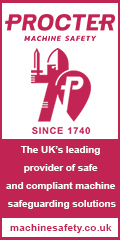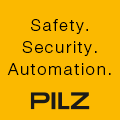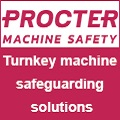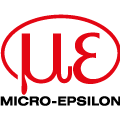
Posted to News on 15th Feb 2023, 09:15
Comprehensive optical bonding expertise
With the advancement of PCAP technology and the use of displays, the in-house bonding possibilities have been continuously expanded at Schurter. The goal is to improve the performance of PCAP touch panels and displays by using optical bonding.
Through various investments in the pre-treatment, glass cleaning as well as in the bonding process, all the bonding technologies are available in-house at Schurter.
Touch sensors, coverlenses and displays are bonded or laminated using a variety of bonding technologies. The optical bonding of displays improves and optimises touch panel performance in order to suit the customer requirements and application conditions.
Optical bonding is a ‘must have’ in industrial and medical applications and also the most common and advanced way of HMI display optimisation. The connection of the display with the coverlense improves the readability, increases the contrast and the brilliance of the colours and boosts the mechanical robustness. Because of the high demand in the market, optical bonding has become an integral part of many touch panel applications.
Which bonding technology is the best?
The determination of the optimal bonding method depends on the various components of the touch panels and the application of the complete systems. With optical bonding, the air gap between the coverlense and the display is filled with highly transparent bonding material. This material fulfils several functions:
- The adhesive function as mechanical attachment of the display to the touch
- sensor
- The elimination of reflections between the components
- To increase the robustness
This achieves a significantly higher output of light of the display and a reduction of the reflections of ambient light at the input system. It is made possible by an adapted refractive index of the bonding material. The reflections at the transition of the display surface to the bonding material and the coverlense are then eliminated. Therefore, more display light actually reaches the viewer whereas irradiated light can no longer be reflected. This optical improvement of the overall system is particularly important for outdoor applications and for demanding visualisations in medical technology.
The mechanical reinforcement through the bonding results to a significantly more robust system. This is especially beneficial for mobile systems and applications in vehicle construction. The elimination of the air gap between the coverlense and display prevents the formation of dew between two components in outdoor applications. Additionally, the intrusion of dirt or liquids is made impossible.
Material selection
Different methods and materials are used for optical bonding. Optical bonding can be carried out with silicone, polyurethane, epoxy resin and acrylate. There are single-component systems as well as multi-component systems. The bonding material is crosslinked by mixing, heating or UV exposure.
It is possible to apply the material in a liquid state to the components or dry in a precisely fitting form. If no liquid material is used, it is also called dry bonding.
As with all adhesives, it is not only the choice of material that is decisive for optimum durability in optical bonding, it is also important to ensure good bonding to the surface of the components. At Schurter a special pre-treatment of the displays is carried out. The joining partners are pre-treated for the subsequent bonding process in a two-stage process. This means that even difficult display surfaces can be processed optimally.
Formulas for the scalability of different display sizes and optimised adhesive quantities were developed for the automated dosing of the liquid adhesive. Schurter has been successfully using bonding with liquid adhesive for several years. Furthermore, the possibility of dry bonding is offered by Schurter.
Optical bonding process
For display optical bonding, a distinction is made between dry bonding and liquid optical clear adhesive (LOCA) bonding.
Dry optical bonding: With dry bonding, the bonding material is cut to the size of the visible display surface. The assembly of coverlense with touch and display is carried out under vacuum in the bonding machine. However, this method is not suitable for all displays.
Liquid optical clear adhesive (LOCA) bonding: The air gap between the display surface and the back of the sensor is filled with a UV liquid adhesive. The adhesive is silicone-free, resistant to aging and UV stable. The process is therefore suitable for TFT displays with frames. The liquid adhesive is dispensed on the coverlense in a special pattern and joined to the display via a controlled surface pressure. The adhesive distributes evenly and bubble-free between the two components. Afterwards the adhesive is cured by means of UV light without heat effect, ie it does not cause material stress due to temperature effect and thus also no mechanical stress.
Air gap bonding
Gasket/air gap bonding: In this process, the display is glued all around with an adhesive frame directly behind the sensor or on the printing of the coverlense in the clean room. An air gap between the display and the sensor/coverlense remains.
Air bonding is a simple and cost-effective way to connect displays with coverlenses or touch sensors. Depending on the application, the assembly takes place with single adhesive strips or with a closed adhesive frame.
Bonding competence at Schurter
Due to many years of further development of the bonding processes at Schurter, the degree of automation and standardisation was increased through various investments in pre-treatment, glass cleaning as well as in the bonding process. In addition, all bonding processes take place in clean rooms of different protection classes in order to prevent dust and particle deposits on the components.
Benefit from the various bonding technologies and Schurter’s know-how for the optimal solution of your customer-specific application.
Want the latest machine building news straight to your inbox? Become a MachineBuilding member for free today >>
Unit 3, Mildshires Business Park
Smeaton Close
HP19 8HL
UNITED KINGDOM
+44 (0) 1296 319 000

















